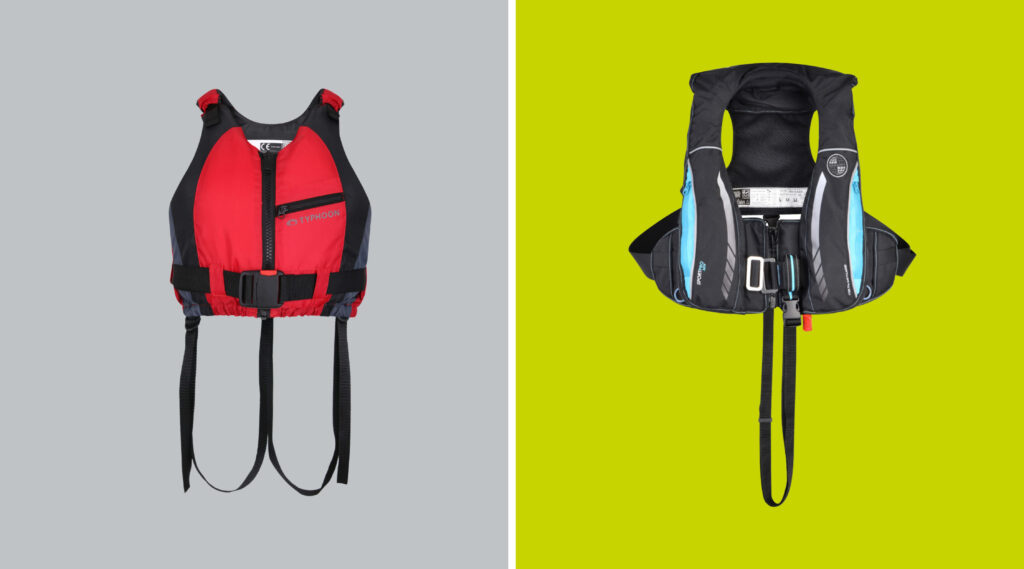When we talk about wearing a lifejacket what we might actually mean is that we are going to be wearing a buoyancy aid. The term ‘lifejacket’ tends to be used as a generic name for both lifejackets and buoyancy aids. However there are some quite important differences between the two.
Both lifejacket and buoyancy aid are designed to keep you afloat, but in general terms a buoyancy aid is used by someone who is fairly likely to end up in the water, for example a paddle boarder or dinghy sailor. Falling in is all meant to be part of watersports fun. The buoyancy aid doesn’t inflate like a lifejacket but instead has built-in flotation, letting you float comfortably in the water so you don’t need to use up a lot of energy when you are swimming to get back on board. If you do end up on the water for longer than expected then the flotation is going to support you while you wait for help to come. As a watersports enthusiast you should be a reasonable swimmer anyway, but it is still vitally important to be wearing a buoyancy aid at all times in the water. Buoyancy aids can look pretty cool too like Typhoon’s front zip Amrok.
A lifejacket is more likely to be used by someone who is not expecting to go into the water but where there is even minimal risk. For example, as a passenger on a ship you might be asked to put on a commercial-styled lifejacket if there is a problem on board that could lead to having to abandon ship or transfer between vessels. The wearer of a lifejacket might not necessarily be a swimmer, indeed the supporting collars on lifejackets can make swimming a bit clumsy but those large collars are key to keeping the person in the water as high up possible, with their head supported and above the waterline. The victim in this case may be injured or unconscious, for example if they have been thrown off a boat during a collision or an onboard drama.
That’s why typically cruising and racing sailors on larger yachts, should don a lifejacket in all but the calmest of conditions to guard against unexpected events like falling overboard.
There are plenty of ‘hybrid’ lifejackets which feature all the built-in flotation of a buoyancy aid while having the supporting collar at the same time and these should be the ones used by non-swimmers and children in the water. Examples include the childen’s Choo lifejacket available from Ocean Safety or Typhoon’s Bouley lifejacket.
Very active experienced sailors, on the other hand, are going to prefer a ‘minimalist’ lifejacket like Typhoon’s Hydro or the advanced Ocean Safety Kru Sport Pro whose inflation bladders are neatly tucked away so they will hardly notice they are wearing one. If it is fitted with an automatic inflation device it will only inflate when it hits the water.
If you are unsure which type of lifesaving aid is right for your activity just contact one of our expert advisers – contact your local Ocean Safety branch here.

